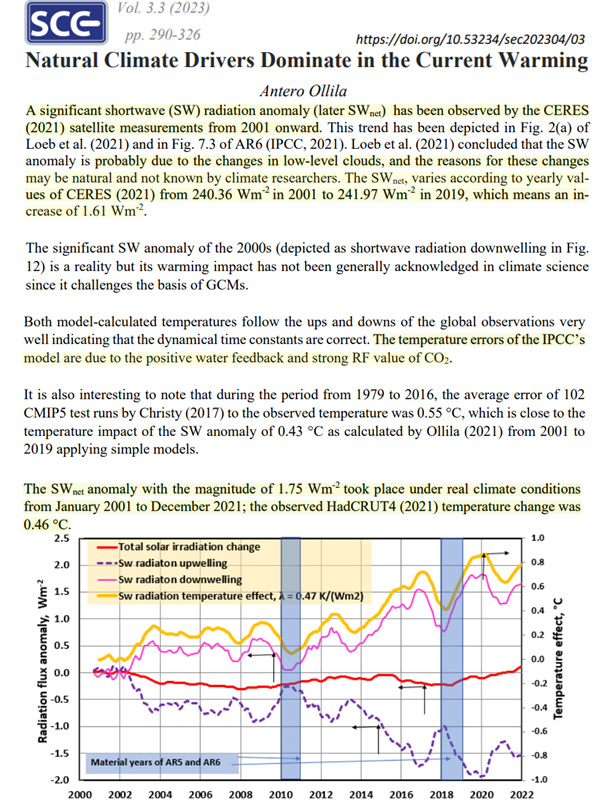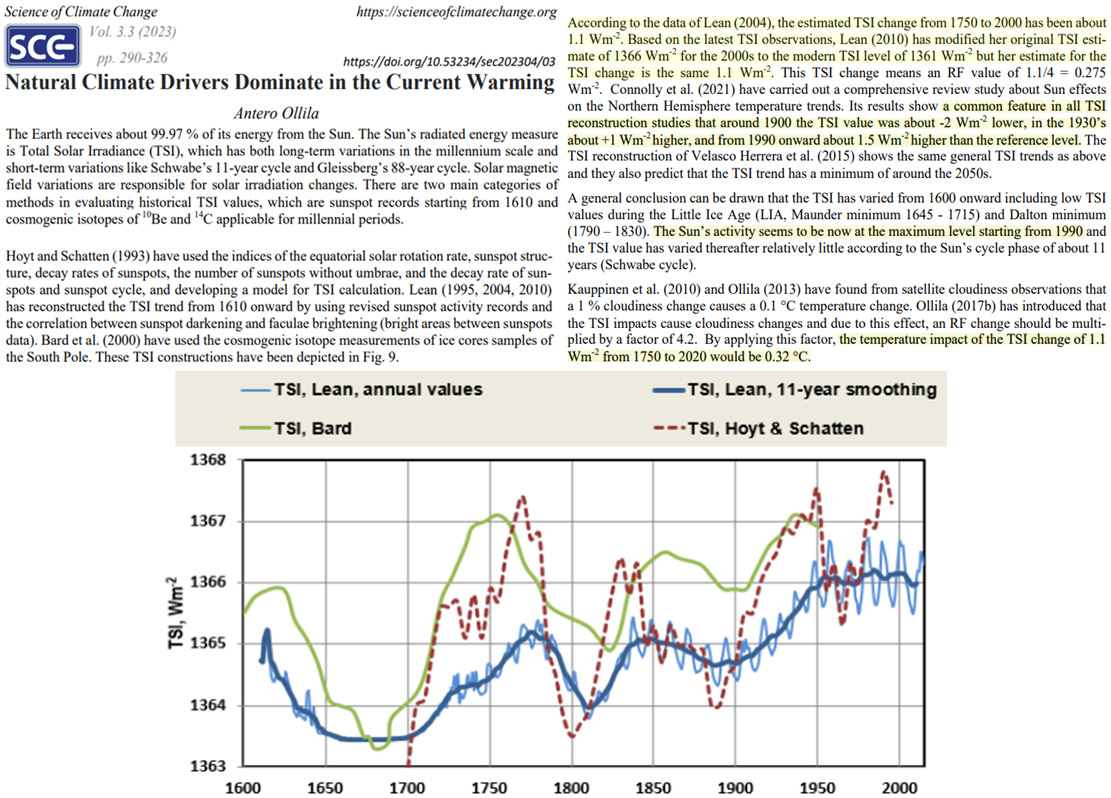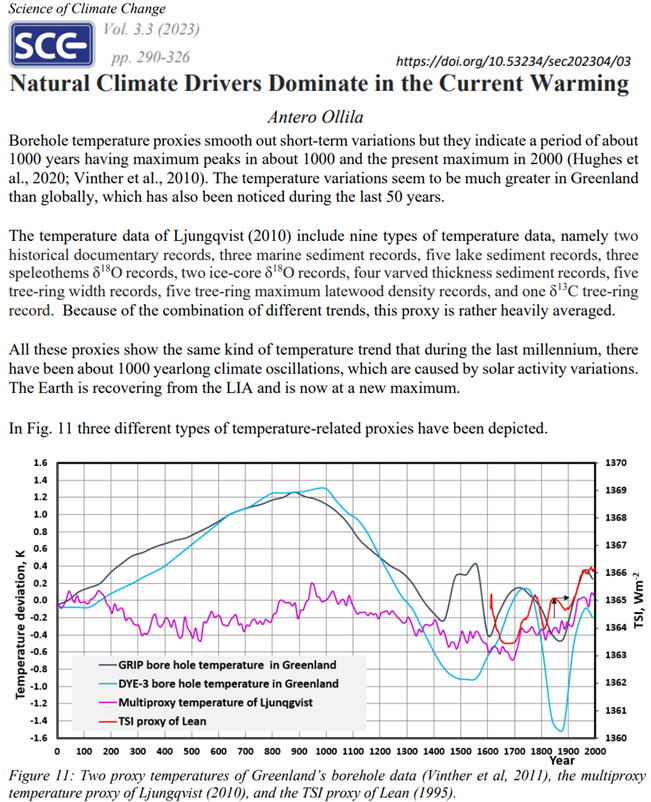More and more evidence is emerging that the modern warming trends are naturally driven, not anthropogenic.
Per CERES observations the surface incident shortwave (SW) radiation anomaly increased by +1.61 W/m² from 2001 to 2019, and +1.75 W/m² from 2001 to 2021 (Ollila, 2023).
This SW increase is likely due to natural variations in cloud cover albedo, or reflectiveness; it can explain global warming (0.46°C) over this period.
The IPCC and climate activists have been downplaying or dismissing the increase in downwelling SW radiation as a driver of warming, as this “challenges the basis of the [climate models]” that attribute warming almost exclusively to human activities.

Image Source: Ollila, 2023
Total Solar Irradiance (TSI) trends have also been linked to long-term climate warming since 1750.
Most TSI reconstruction studies depict TSI rising by ~3 W/m² from 1900 to the 1930s (from -2 W/m² below to +1 W/m² above the reference level), and then TSI is “about 1.5 W/m² higher than the reference level” from around 1990 onward.
In all, TSI has increased by 1.1 W/m² since 1750, which is a non-negligible contribution to global warming.
“[T]he temperature impact of the TSI change of 1.1 W/m² from 1750 to 2020 would be 0.32°C.”

Image Source: Ollila, 2023
Finally, there is nothing remarkable about the modern warming trend when viewed in the context of proxy temperature reconstructions of last few millennia.






Recent Comments